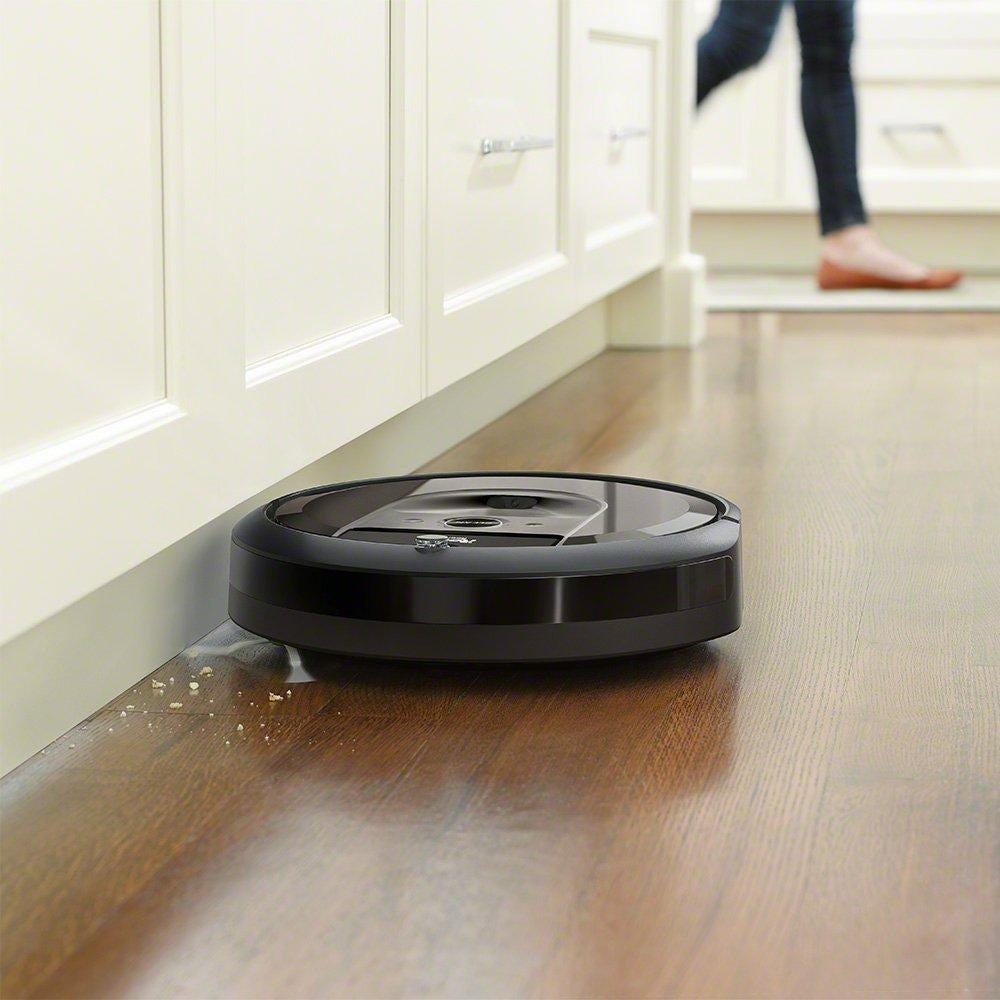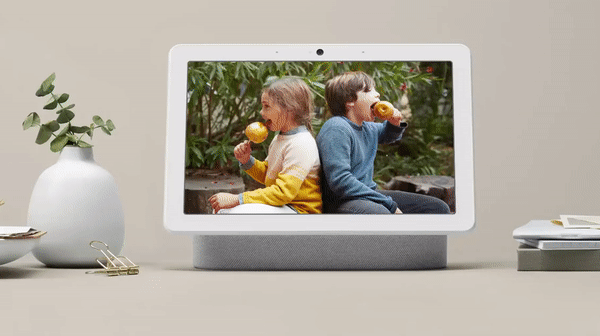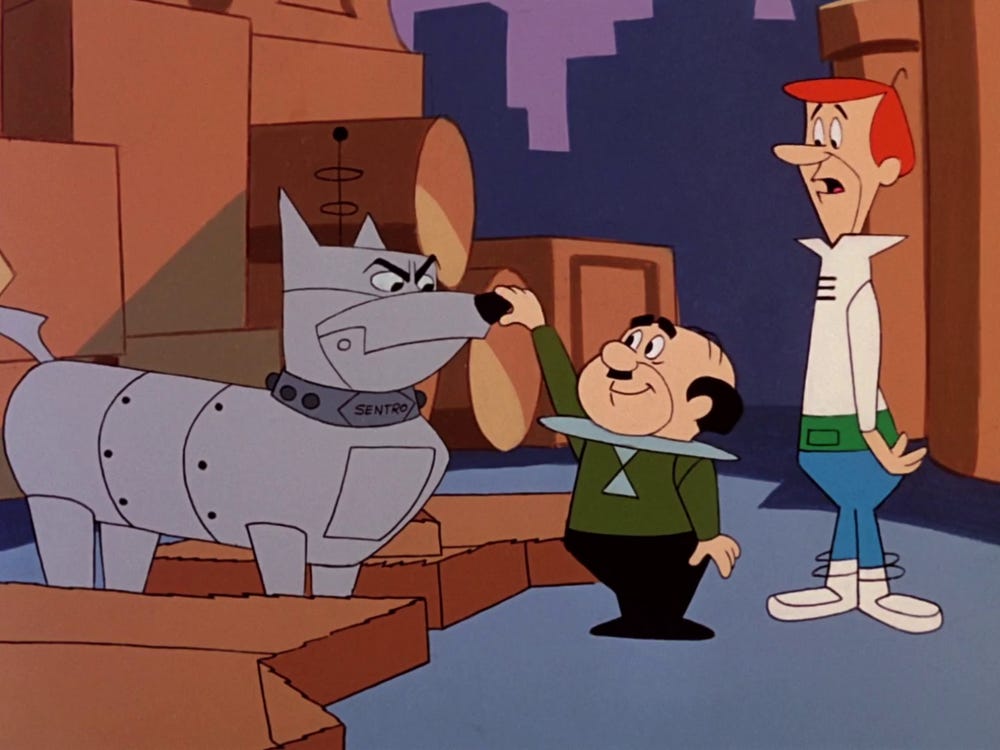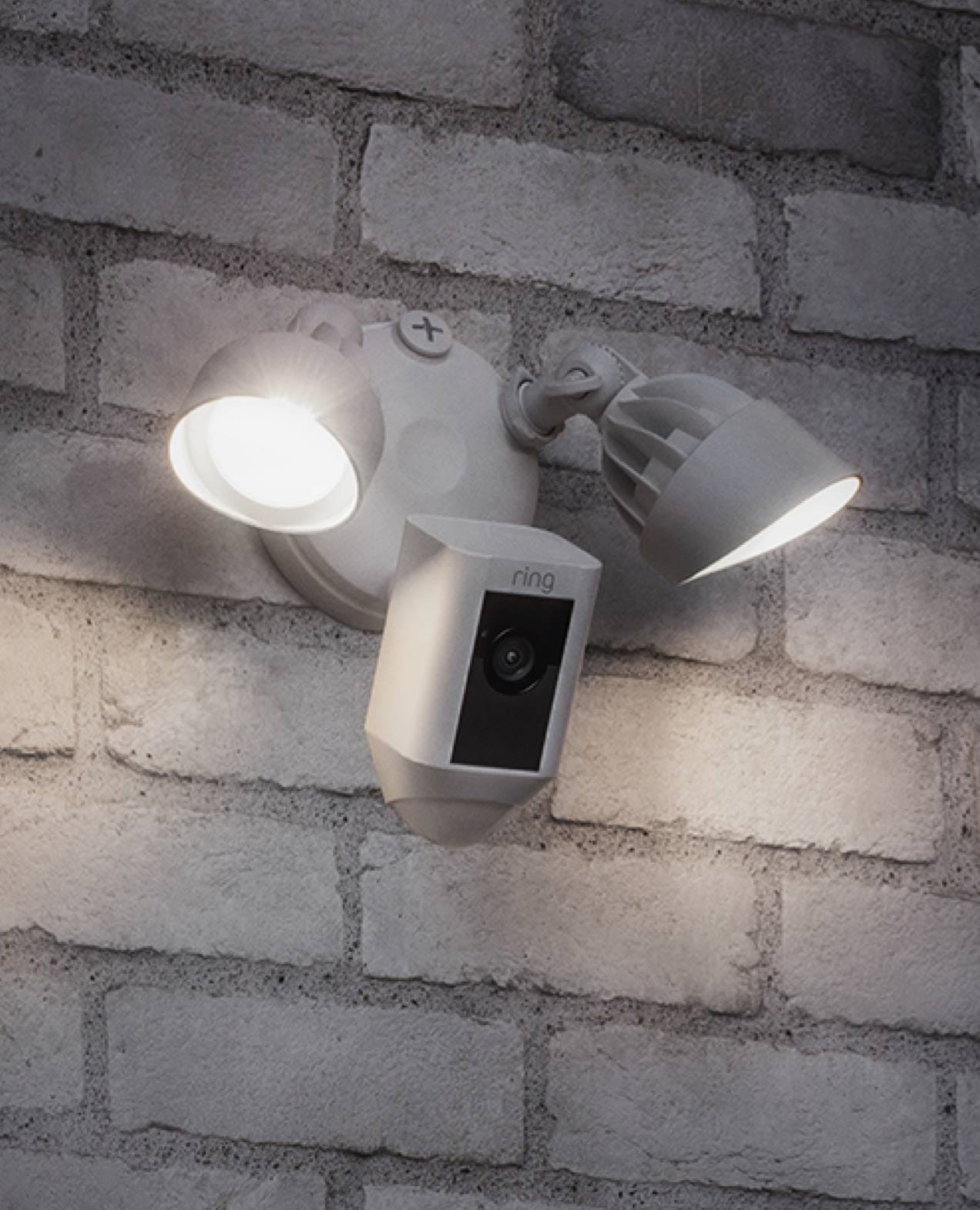Building The Jetson's House
A look into the classic American cartoon "The Jetsons" and how close we are to being able to build a "Jetsons house"
Positron is a blog that covers topics related to technology, business, society, and everything in between that glues it all together. In this post, I take a look at the classic American cartoon “The Jetsons”.

Source: Warner Media
The Jetsons, a 1960s counterpart to The Flintstones, is a well known, classic American cartoon. Written by William Hanna and Joseph Barbera and set in the bustling world of 2062, The Jetsons imagines a world of the future filled with fantastical machinations which help us go about our daily lives. While the show is filled with already outdated cultural norms and “Googie” style architecture, the show offers a glimpse into how we expected the future to unfold 60 years ago. Today, in 2020, many of the technological advances shown in The Jetsons are available at scale. Given that many of Hanna & Barbera’s predictions have come to pass, how close are we to building a “Jetsons” house?
Components
When thinking about how to define a Jetsons home, I break it down into three separate (although often overlapping) categories:
Convenience and Automation
Artificial Intelligence
Security
Convenience and Automation
One of the most realistic features of the Jetson’s house was a device which had the ability to video call others from within the home. Moreover, the device seemed to be portable in the sense that it didn’t require being in a stationary environment i.e a dedicated office.
Today, we have very similar capabilities. Our mobile phones allow us to communicate with each other via high quality video calls from our homes and on the go. Furthermore, devices like the Google Home Hub Max and Facebook Portal enable home video calling experiences that are more dynamic (as we no longer need to have the device on our person).
Another key machination featured in The Jetsons, and arguably a member of the Jetsons family, is Rosey the Robot, the family’s robot assistant. In the show, it is featured taking on a bevy of the Jetson’s household tasks including cooking, cleaning, and other maintenance duties. Rosey also regularly interacts with the family and has its own emotions.

Source: Warner Media
In addition, there were other robots dedicated to specific niche functions. For example, a robot vacuum cleaner.

Source: Warner Media
While we do not have humanoid robots that can take care of our more tedious day to day chores in an end to end fashion, we do have robots, such as the Roomba, which can take care of specific tasks at a high level without much human intervention.
Roomba Vacuum

Source: iRobot
As for robotic personal assistants, multiple companies in the advanced robotics space are quickly speeding towards making such a reality possible. Boston Dynamics has been working on humanoid and canine like robots for years, with the goal of them eventually aiding humans in carrying out more complex end to end tasks that limbless robots like the Roomba would be incapable of doing. For example, here are some experiments with one of their flagship robots, the Spot:
That demo was from 2018. In just two years, the Spot has advanced from its rudimentary form into this much more fleshed out version:
In the avenue of food preparation, there are now machines which can make entire (and complex) dishes end to end without human intervention. For example, check out the Indian startup Mechanical Chef’s device that makes recipes such as Butter Chicken given ingredients and instructions.Another cool example is Le Bread Xpress, the company which makes the Bake XPress, a vending machine which can make freshly baked goods on the spot:
While these examples are incredibly cool, I do not think they are a catch all solution for food preparation for multiple reasons.
First, these devices are highly specialized. While owning a device that exclusively makes jollof rice, fried plantain, and a small array of other tasty dishes would be awesome personally, I do not think that would justify the cost of buying such an expensive and unwieldy machine. Secondly, because such a device would contain a lot of moving parts, the cost of maintenance overtime may negate any productivity gains the device would bring to the user’s life as an individual owner. Much like what the car did for people in the 20th century, in order for me to justify purchasing such a machine, it would have to provide a utility so beneficial to me as a user that I could ignore the cost of maintenance.
An ideal food preparation solution would likely resemble a humanoid robot with highly capable limbs that knows where the ingredients are in your home, can learn new recipes, and can clean up after itself. Writing this, such a robot sounds a lot like Rosey, so it seems this is something The Jetsons predicted that we haven’t quite delivered on yet.
Artificial Intelligence
Although much less flashy than personal robot assistants, there many subtle ways in which AI has made its way into our living spaces.
The most obvious manifestation of this phenomenon is the personal voice assistant. Coming in a variety of form factors and with integrations with many IoT devices, these personal assistants aim to be the hub of the home that glue everything together. On many occasions I have found it very convenient to simply speak into the aether in order to turn on a light or answer a simple search query.
Google Nest Hub Max

Source: Google
There are also many subtle ways in which ML can improve our home life in more passive ways. For example, the Nest Learning Thermostat, and other devices like it, learn to adapt to your environment and schedule in order to manage the total amount of energy the HVAC system in your apartment or home utilizes. The Nest can also optimize these learning algorithms by automatically detecting the wiring of your HVAC system and adjusting settings accordingly.
Nest Thermostat

Source: Google
Security
Sentro, A Robot Watchdog

Source: Warner Media
Although the Jetsons did not offer many predictions in the realm of automated security, with the general trend of home automation there has been an effort to push home security into the IoT world. For example, there has been a significant shift away from classical locks to a combination of smart locking mechanisms and indoor/outdoor surveillance systems.
Along with thermostats, Google’s Nest line offers a lock & alarm system, a doorbell, smoke detectors, and an indoor camera. Another well known company in the space is Amazon’s Ring, which offers a variety of both indoor and outdoor cameras, doorbells, and much more.
Ring Floodlight Camera

Source: Ring
Google also has a new partnership with ADT in which the Google Home Hub will be the central console for all ADT security devices.
Google Nest Devices

Source: Google
Of course, these solutions come with risks, and in some cases, privacy and ethical concerns. For example, Ring is well known to share their customers Ring video data with law enforcement, a practice for which they have come under heavy criticism for.
What’s Next?
One thing that I think is important to note is that the Jetsons house is not the typical single family home with well sized yards and white picket fence as typically advertised in the “American Dream”. Instead, the Jetsons live in the Skypad Apartments, a large apartment complex in Orbit city.
Bringing things back to reality, the number of renters has been steadily increasing, especially quickly in the United States; in addition, more and more renters want smart home amenities. Given these trends, the market for such tech would be limited if companies in the space mainly focused on solutions only compatible with a fully owned property (requiring structural change, installation, etc).
To truly achieve scale in this space, potential solutions will need to be developed with multi family homes and apartments in mind. From that perspective, companies seeking to become the de-facto standard in smart home verticals need to embrace multi family building focused solutions to market to landlords and property developers before a new building is ever built vs going all in on marketing directly to consumers in the traditional B2C fashion.

Source: RENTCafe
When it comes to the notion of ownership tech built for the individual, the Jetson’s ideas of the future differ quite a bit from how things may unfold in reality. For example, in this still from an episode of The Jetsons, the Jetson’s receive mail in a mailbox directly attached to the outer perimeter of their apartment space:
Orbit City Mail

Source: Warner Media
However, the future of mail delivery is more likely to look like solutions akin to the Amazon Hub, a communal place in the building where residents can easily pick up their mail with a simple numerical or QR code, building on the centralized mail already in place at many apartments.
In addition to this, Amazon is also working on a new service, Alexa for Residential, which will enable properties to set up Alexa devices in each unit prior to a tenant ever moving in thus enabling the tenant to take advantage of smart home features without an Amazon account and at no (apparent) added cost.
While it does sound like a very convenient setup that would be attractive to property developers, smart home fleet management services like this are ripe with the potential for abuse of privacy. What if, for example, your landlord could monitor the audio from inside your apartment with the Drop In feature?


As services like Alexa for Residential become more popular, they will only add to the mounting pressure to further regulate who has access to our data ,and for what purposes, in the United States and abroad.
Reflections
While we do have versions of much of the tech from The Jetsons, albeit sometimes a bit rudimentary, the numerous societal forces emerging that will change the way we design and deploy technologies for consumers will in turn change the definition of what it means to have built the proverbial Jetson’s house overtime. The shift from individualistic to more collective solutions, concerns about data privacy which we could not have even fathomed in the 1960s, and the general innovation needed to make tech featured in the show a reality will make building the Jetson’s house an ever elusive target in the medium term. However, given the rate of innovation over the last ten years alone and the (varying) forays into data regulation by most governments, I do not think it is a lost cause in the slightest. After all, we still have 42 years left to get there :)
Cheers,
Denalex Orakwue
I love to learn. As always, if you have a different perspective on this topic you’d like to share or have context on points I may have missed, please leave a comment below. If you enjoyed this post and want to read more of the Positron blog in the future, please subscribe!
Disclaimer: I work at Google as a software engineer. All sources are publicly available and all opinions are my own.


Before your next Zaxby's run, check out Zaxby's Menu Price to plan your perfect meal and budget. This dedicated blog provides insightful reviews, accurate pricing, and details on all the signature sauces and combos, ensuring you get the most out of the famous Zaxby's experience. Explore their guides here:
https://zaxbysmenuprice.com/
The concept of building a "Jetsons house" is both nostalgic and exciting—it blends futuristic dreams with emerging technologies like automation, smart appliances, and AI. We're closer than ever with voice assistants, robotic vacuums, and even food delivery drones. Funny enough, even fast food has caught up—Zaxby’s lets you order online, check Zaxbys menu prices from https://zaxbysmenu.us/ , and even track nutrition info from your phone. So while we may not have flying cars just yet, living like the Jetsons—Zaxby’s meal in hand—isn’t as far off as it once seemed.